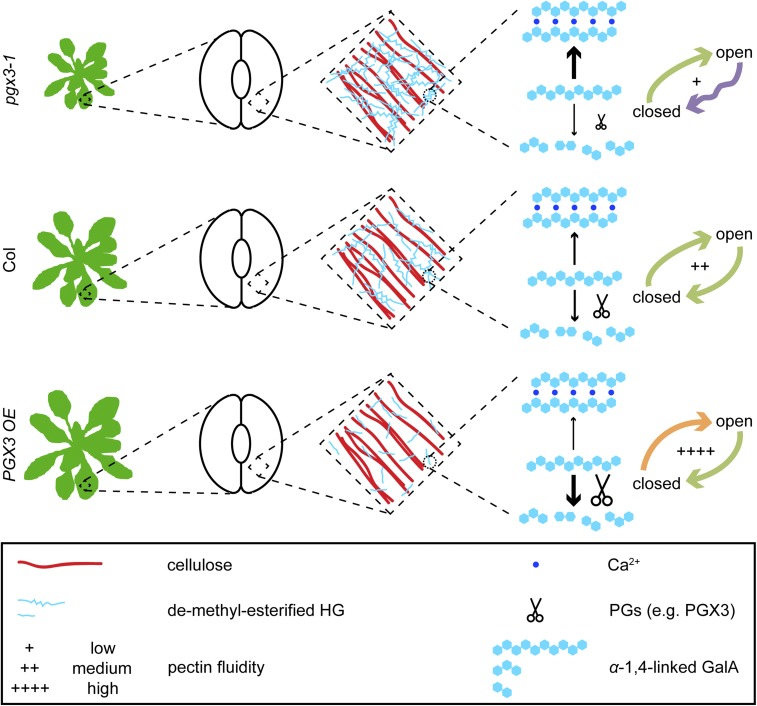Figure 9.
Schematic for How PGX3 Regulates Rosette Expansion and Stomatal Dynamics.
Demethylesterified HG can either be cross-linked by Ca2+ or be subject to degradation by PGs such as PGX3. The balance between these two processes maintain pectin fluidity in the walls that undergo irreversible expansion (e.g., in rosettes) and in guard cell walls that undergo reversible expansion and contraction. In pgx3-1 mutants, although there is no significant change in pectin size due to the absence of PGX3 expression, Ca2+-cross-linked HG formation occurs more frequently because the abundance of demethylesterified HG is increased. As a result, pectin fluidity is lessened and tissue growth is inhibited. Stomata exhibit stepwise closure, but guard cell walls are still fluid enough to allow for normal stomatal opening. In Col controls, pectin fluidity is maintained at intermediate levels due to a balance between Ca2+-cross-linking and pectin degradation, enabling normal stomatal opening or closure. In PGX3 OE plants, HG molecules are smaller due to excessive PGX3 expression and more pectin degradation, which, together with the observation that there is less demethylesterified HG, leads to enhanced pectin fluidity, increased rosette size, and faster stomatal opening.

